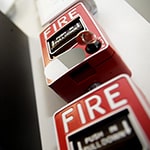As National Cybersecurity Awareness Month winds down, the Federal Emergency Management Agency (FEMA) Region 5 office wants everyone to Do Your Part. #BeCyberSmart and get the resources you need to be safe online.
“Protecting against potential cyberattacks should be a part of everyone’s overall disaster preparedness plan,” said Kevin M. Sligh, acting regional administrator, FEMA Region 5. “Take the time now to set-up the proper controls in your online life—whether at home, work or school—to keep you, your family and your information safe and secure.”
“Cybersecurity starts with each of us, and is everyone’s responsibility,” said Alex Joves, regional director, Cybersecurity & Infrastructure Security Agency (CISA) Region 5. Cyber self-defense basics can go a long way to keeping you and your data out of the hands of bad actors.”
The following are things you can do now before a cyberattack occurs:
- Use strong passwords that are 12 characters or longer. Use upper and lowercase letters, numbers and special characters. Use a password manager.
- Use a stronger authentication such as a PIN or password that only you would know. Consider using a separate device that can receive a code or uses a biometric scan (e.g. fingerprint scanner).
- Watch for suspicious activity that asks you to do something right away, offers something that sounds too good to be true or needs your personal information. Think before you click.
- Check your account statements and credit reports regularly.
- Use secure Internet communications.
- Use sites that use HTTPS if you will access or provide any personal information. Do not use sites with invalid certificates. Use a Virtual Private Network (VPN) that creates a secure connection.
- Use antivirus solutions, malware and firewalls to block threats.
- Regularly back up your files in an encrypted file or encrypted file storage device.
- Limit the personal information you share online. Change privacy settings and do not use location features.
- Protect your home network by changing the administrative and WiFi passwords regularly. When configuring your router, choose the WiFi Protected Access 2 (WPA2) Advanced Encryption Standard (AES) setting, which is the strongest encryption option.
To learn more about National Cybersecurity Awareness Month, or to find tip sheets and resources for reducing cybersecurity risks and protecting yourself online visit CISA’s website at www.cisa.gov/national-cybersecurity-awareness-month-resources. You can also find cybersecurity information at www.ready.gov/cybersecurity.



